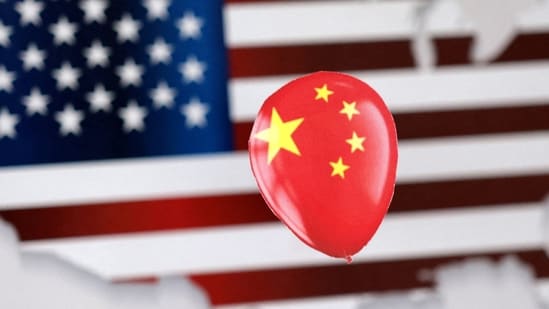In a shocking revelation that sent diplomatic shockwaves between the United States and China, a Chinese spy balloon equipped with American-made surveillance gear was discovered hovering over US military sites earlier this year. This clandestine operation sparked a diplomatic crisis, casting a shadow of suspicion on the intentions of the Chinese government. As investigations into the incident unfolded, it became clear that the balloon was not only equipped with commercially available US gear but also harbored specialized Chinese sensors and other equipment for gathering intelligence. This article delves into the details of this espionage saga, exploring the history of spy balloons, the technology involved, and the implications for international relations.

The Rise of Spy Balloons: A Historical Perspective
Spy balloons have a long and storied history, dating back to the early days of aerial reconnaissance. During World War I, both the Allies and the Central Powers employed various types of balloons to gather intelligence on enemy positions and troop movements. These balloons offered a unique vantage point, allowing observers to survey vast areas of the battlefield from above. Over the years, advancements in technology and the advent of satellite imagery have diminished the role of spy balloons. However, recent incidents like the Chinese spy balloon over the US have reignited interest in these covert surveillance tools.
Unveiling the Chinese Spy Balloon
The Chinese spy balloon that infiltrated US airspace earlier this year relied on a combination of American and Chinese technology to carry out its covert mission. According to preliminary findings from a closely held investigation, the balloon was loaded with American-made equipment, enabling it to collect photos, videos, and other sensitive information. This revelation raises questions about the origin and purpose of the surveillance gear used in the balloon.
US officials, tracing purchase orders for specific equipment found on the balloon, have probed potential links between the purchasers and the Chinese government. The investigation aims to unravel the intricate web of connections that facilitated this audacious act of espionage. While China has remained silent on the matter, the discovery of American-made technology on the balloon has further strained relations between the two nations.

Espionage or Weather Monitoring: Unraveling the Intentions
China has vehemently denied any nefarious intentions behind the spy balloon, asserting that it was primarily intended for weather monitoring purposes. However, the preliminary findings of the investigation strongly support the conclusion that the balloon was indeed deployed for spying purposes. The presence of specialized Chinese sensors and equipment designed for intelligence gathering casts doubt on China’s claims.
Tensions and Diplomatic Fallout
The revelation of the Chinese spy balloon has reignited tensions between the United States and China, already strained by a multitude of geopolitical issues. The incident comes on the heels of Secretary of State Antony Blinken’s visit to Beijing, which aimed to mend relations between the two nations1. However, the discovery of a Chinese spy balloon equipped with American technology has further eroded trust and deepened suspicions.

The Implications for International Relations
The use of a spy balloon equipped with American technology by the Chinese government raises serious concerns about the security of sensitive information and the potential compromise of national defense systems. It underscores the need for robust cybersecurity measures and heightened vigilance in an increasingly interconnected world. The incident serves as a stark reminder of the ongoing battle between nations for intelligence supremacy.
Balancing National Security and Technological Advancement
The discovery of American-made surveillance gear on the Chinese spy balloon also sparks a broader debate about the delicate balance between national security and technological advancement. The incident highlights the need for stricter controls and regulations surrounding the export of sensitive technologies, ensuring that they do not inadvertently fall into the wrong hands. It also underscores the importance of international cooperation in combating the proliferation of advanced surveillance capabilities.
Conclusion
The Chinese spy balloon incident has exposed the shadowy world of espionage and the evolving tactics employed by nations to gather intelligence. The use of American-made surveillance gear on the balloon has raised serious questions about the integrity of supply chains and the vulnerability of advanced technologies to exploitation. As nations grapple with the implications of this incident, it is crucial to bolster cybersecurity measures, foster international cooperation, and strike a delicate balance between national security and technological advancement.













